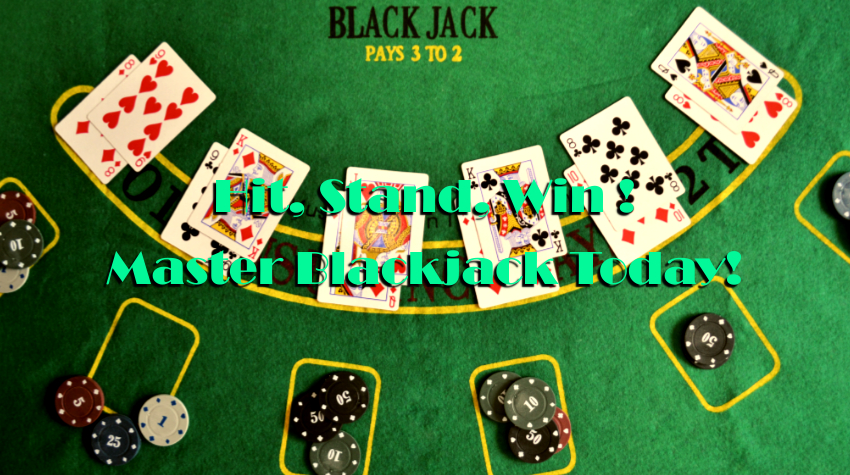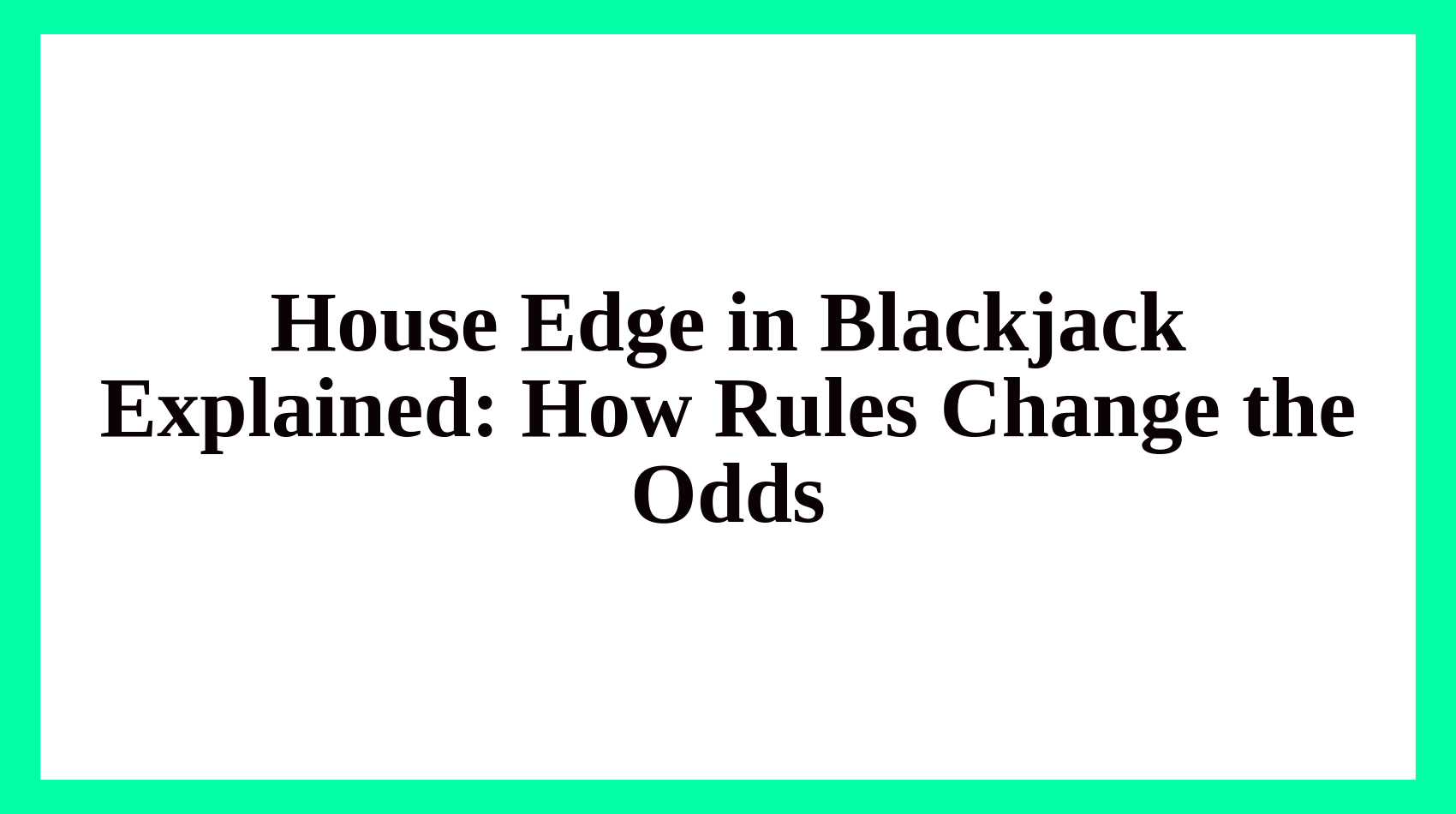Introduction: Why the House Always Has an Edge
Blackjack has long been one of the most popular casino games in the world. Known for its mix of skill, strategy, and chance, it offers one of the lowest house edges of any casino table game—especially when played with proper strategy.
But what exactly is the house edge, and how does it affect your chances of winning?
Simply put, the house edge represents the mathematical advantage the casino holds over players in the long run. Even in blackjack—where strategy matters—the rules, payouts, and number of decks subtly shift the odds in the casino’s favor.
This guide from Casino Savvy breaks down how the blackjack house edge works, what factors influence it, and how you can minimize it through smart play.
If you’re new to the game, it’s best to start with the basics. Check out What Is Blackjack? for a full beginner-friendly introduction before diving deeper into house edge concepts.
What Is the House Edge in Blackjack?
Definition and Basics
In casino terms, the house edge is the percentage of each bet that the casino expects to keep over time. In blackjack, this number typically ranges from 0.5% to 2%, depending on the rules and how well the player uses strategy.
For example:
- A house edge of 1% means that, statistically, the casino earns ₱1 for every ₱100 wagered.
- Over thousands of hands, this small percentage ensures the casino always comes out ahead—though short-term wins are always possible.
Why Blackjack Is Unique
Unlike slot machines or roulette, blackjack allows players to influence outcomes with decision-making. Choices like whether to hit, stand, double down, or split can alter the long-term return. That’s why blackjack’s house edge is not fixed—it changes with player behavior and table conditions.
How the House Edge Is Built into Blackjack
1. Dealer Advantage
The single biggest reason casinos profit from blackjack is dealer position. The player must act first, which means that if both the player and dealer bust, the casino still wins.
2. Rule Variations
Even minor differences in rules—such as when the dealer hits or stands on soft 17—can shift the house edge by several tenths of a percent.
For example:
- Dealer stands on soft 17 → house edge: 0.2% lower
- Dealer hits on soft 17 → house edge: 0.2% higher
Common Rule Variations That Affect the House Edge
| Rule | Player-Friendly? | Effect on House Edge |
| Dealer stands on soft 17 | ✅ Yes | -0.20% |
| Blackjack pays 3:2 | ✅ Yes | -1.39% |
| Blackjack pays 6:5 | ❌ No | +1.39% |
| Double after split allowed | ✅ Yes | -0.17% |
| Resplitting aces allowed | ✅ Yes | -0.08% |
| No surrender option | ❌ No | +0.08% |
These small differences might seem minor, but collectively, they can double or triple the house edge.
The Role of Decks in Blackjack Odds
Single Deck vs Multi-Deck Games
- Single-deck blackjack generally offers the best odds for players because there are fewer cards to track and the probability of drawing natural blackjacks (21) increases.
- Six- or eight-deck games, common in online and live casinos, slightly raise the house edge but allow for smoother gameplay.
| Decks Used | Typical House Edge |
| 1 Deck | 0.17% |
| 2 Decks | 0.35% |
| 6 Decks | 0.50% |
| 8 Decks | 0.60% |
Why More Decks Favor the House
More decks mean the likelihood of player blackjacks decreases while the dealer’s chance of winning hands increases slightly. This is why most casinos prefer multiple-deck formats—it subtly shifts the long-term odds in their favor.
How Player Decisions Affect the House Edge
1. Playing Without Strategy
Beginners who rely on intuition or guesswork can increase the house edge from 0.5% to over 4%, turning a fair game into one heavily tilted toward the casino.
2. Using Basic Strategy
Following a basic strategy chart—based on mathematical probability—helps players reduce the house edge to as low as 0.5%.
3. Card Counting
Though not applicable in most online blackjack games, card counting can swing the odds slightly in the player’s favor in live games. However, casinos monitor this closely and may ban suspected counters.
Blackjack Variants and Their Impact on House Edge
Classic Blackjack
- Standard rules, dealer stands on soft 17.
- Best odds for players: around 0.5% house edge.
European Blackjack
- Dealer receives one card face-up.
- Slightly higher house edge: 0.62%.
Spanish 21
- Uses a 48-card deck (no 10s), but includes favorable rules like late surrender and doubling after splits.
- Average house edge: 0.4–0.8%, depending on conditions.
Blackjack Switch
- Players receive two hands and can swap cards.
- Unique mechanics increase excitement but also the house edge to around 0.6–0.7%.
How Payout Ratios Change the Odds
The 3:2 vs 6:5 Payout Difference
One of the most critical rules for any player to check is the blackjack payout ratio.
- 3:2 Payout (Traditional): A ₱1,000 bet pays ₱1,500 for a natural blackjack.
- 6:5 Payout (Modern Variant): The same bet only pays ₱1,200.
That 20% reduction in winnings raises the house edge by over 1.3%, making it one of the most player-unfriendly rules in modern blackjack. Always seek 3:2 tables whenever possible.
Practical Tips to Reduce the House Edge
Choose Tables with Favorable Rules
Look for:
- Dealer stands on soft 17
- Blackjack pays 3:2
- Double after split allowed
- Fewer decks in play
Practice with Free Online Games
Before risking money, practice with free blackjack simulations to learn how decisions affect odds.
Manage Bankroll Wisely
Even small edges don’t guarantee short-term success. Bet conservatively and set limits to sustain longer play sessions.
Comparing Blackjack to Other Casino Games
| Game | Typical House Edge | Skill Influence |
| Blackjack | 0.5%–2% | High |
| Baccarat | 1.06% (Banker Bet) | Low |
| Roulette (Single Zero) | 2.7% | Low |
| Slots | 3%–10% | None |
Blackjack remains one of the few casino games where player decisions can significantly lower the house advantage, making it ideal for strategic players.
Conclusion: How to Beat the Edge

\ Hit, Stand, Win! /
The house edge in blackjack isn’t about luck—it’s about understanding how the rules, decks, and payouts interact. Every rule tweak shifts the math, and every decision affects your long-term results.
For casual players, sticking to basic strategy and choosing player-friendly rules can cut the house edge to less than 1%, giving you one of the best odds in the casino.
If you want to deepen your understanding of casino mechanics and explore strategies beyond blackjack—like slot game reviews, RTP comparisons, and provider breakdowns—visit Casino Savvy, your trusted source for casino insights in Southeast Asia.









Comments